5 Trends Shaping the Future of Procurement Audits


Procurement as a function is changing—and it’s changing fast.
Therefore, those who want to keep this vital part of their organization compliant and value-driven have to step up their procurement audit game as well.
That’s why we decided to dedicate this article to the top five trends currently revolutionizing procurement auditing.
From advanced technologies to regulatory changes, we cover it all to help you ensure your procurement practices are always up to standard and risk-free.
Let’s get started.
These days, there are numerous use cases for AI in procurement, and audits are definitely no exception.
In fact, Sebastian Stöckle, Partner at KPMG International, a global network of firms providing audit, tax, and advisory services, claims that this technology is set to revolutionize the entire process of auditing.
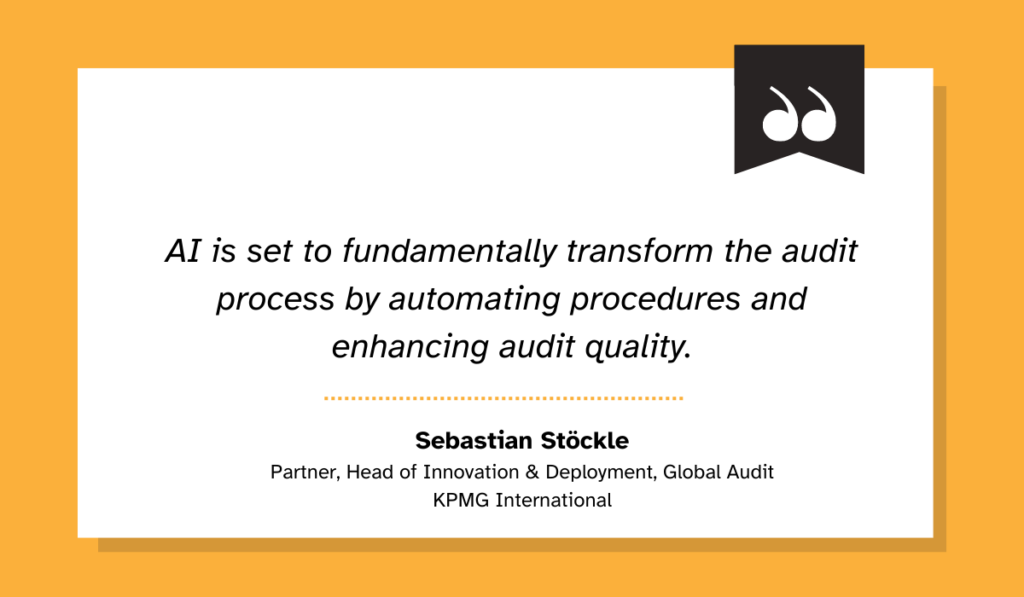
Illustration: Veridion / Quote: LinkedIn
The greatest value of artificial intelligence in this context is its automation capabilities, allowing auditors to streamline many repetitive, yet critical tasks.
This significantly minimizes human error and speeds up the whole process.
For instance, tasks like invoice verification or expense analysis are important parts of an auditor’s job.
However, performing them manually can be quite time-consuming and often leads to mistakes.
AI, on the other hand, can automatically match invoices with corresponding POs or analyze historical spending data, thus flagging discrepancies and identifying suspicious activity in the process.
And the best part?
It does it all in the blink of an eye.
Nicolas Walden from the Hackett Group explains why this piece of tech is almost unbeatable when it comes to analyzing vast amounts of data and spotting patterns and trends.
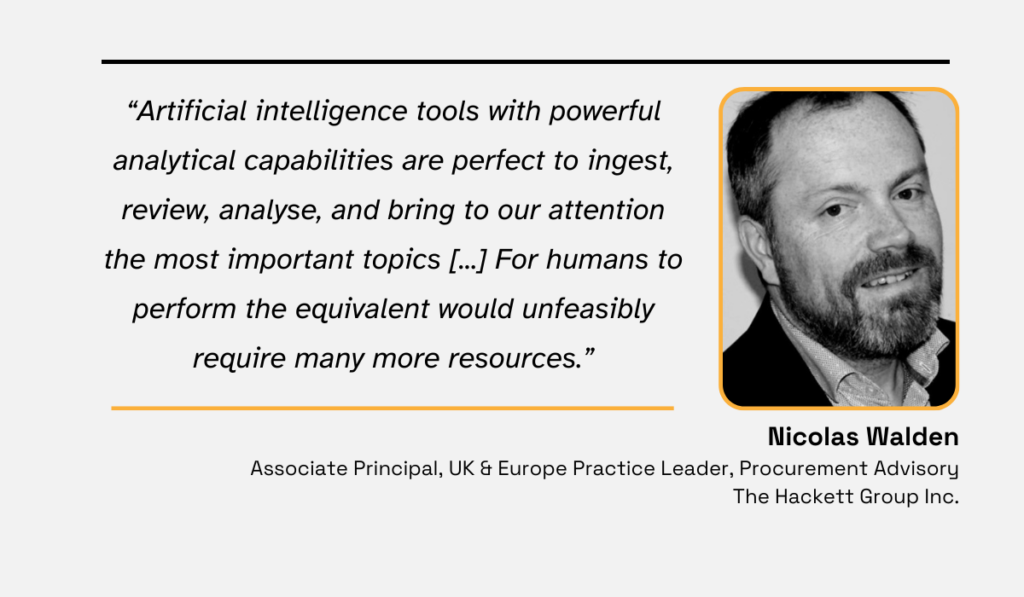
Illustration: Veridion / Quote: Procurement Magazine
And while AI handles these tasks, auditors have more time to focus on activities where technology cannot replace their years of experience and expertise.
This would include processes like more complex analyses and strategic decision-making.
Ultimately, the combination of AI’s speed and the auditors’ intuition leads to much more efficient and successful audits.
The result?
Faster risk identification and mitigation.
To illustrate this point, let’s take as an example document management—a vital process in procurement—and what happens when it goes wrong due to internal audits being neglected for 13 years.
This is precisely what happened with the National Capital Authority (NCA), a Federal Government body in Australia.
In 2022, the Australian National Audit Office (ANAO) audited their procurement processes and found significant problems with record keeping.
In the article reporting this story, their documentation was described as “Swiss cheese”—full of holes, with 83% of documents lacking signatures, being in draft form, or missing some other key information.
The ANAO report highlighted this as a very serious issue:
“Non-compliance with documentation requirements can have a broader impact, particularly where goods and/or services are ordered or commenced without the authorisation for, or the price and conditions of, the purchase being documented and retained.”
Such a lack of clarity and accountability leads to misunderstandings at best, and severe financial and legal consequences at worst.
Had the NCA conducted internal audits and used AI, this could’ve been completely avoided.
AI systems can automatically classify documents into relevant categories based on their content and metadata, detect errors, and identify missing information.
This would’ve allowed internal auditors to identify the issues on time and fix them long before the ANAO auditing team paid them a visit.
The bottom line?
Don’t underestimate the power of AI in procurement audits.
It isn’t just about making the auditors’ jobs easier, but also about creating a better, faster audit process that shields the function and the company as a whole from all sorts of risks and disruptions.
Blockchain tech is a real-time decentralized ledger system that tracks and records transactions across multiple computers, ensuring that once data is recorded, it cannot be altered.
You can think of it as a shared manila folder, where each transaction represents a document added to the folder.
Only, once added and confirmed by everyone as correct, the document is there to stay, unable to be changed or removed by anyone.
Ivan Avramenko, Area Sourcing Manager at a frozen food merchant NOWACO, elaborates on what this means in the context of procurement.
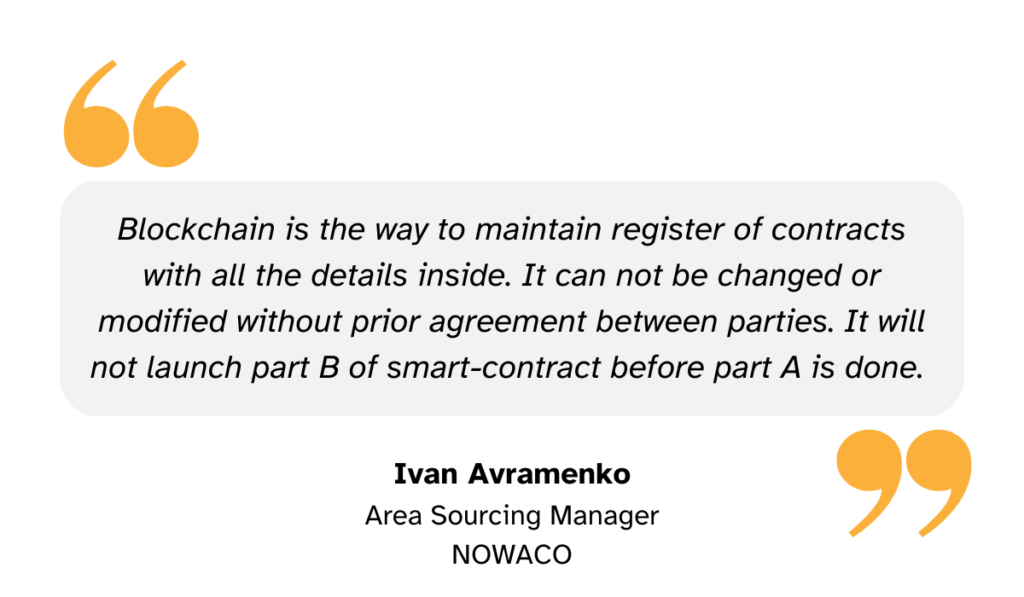
Illustration: Veridion / Quote: LinkedIn
For auditors, such transparency and access to unchangeable, verified information is extremely valuable.
It allows them to perform their duties more effectively and keep everybody accountable, in turn preventing disruptions that could derail operations.
For example, one serious problem that blockchain-powered procurement audits can solve is invoice scams.
How do these scams work?
It’s actually pretty simple: scammers, posing as suppliers and vendors, send fake payment requests to the company intending to extract money from it.
According to Barclays, a British multinational universal bank, this issue is more common than you’d think.
Invoice scams, they report, account for 55% of money small businesses lose to scammers.
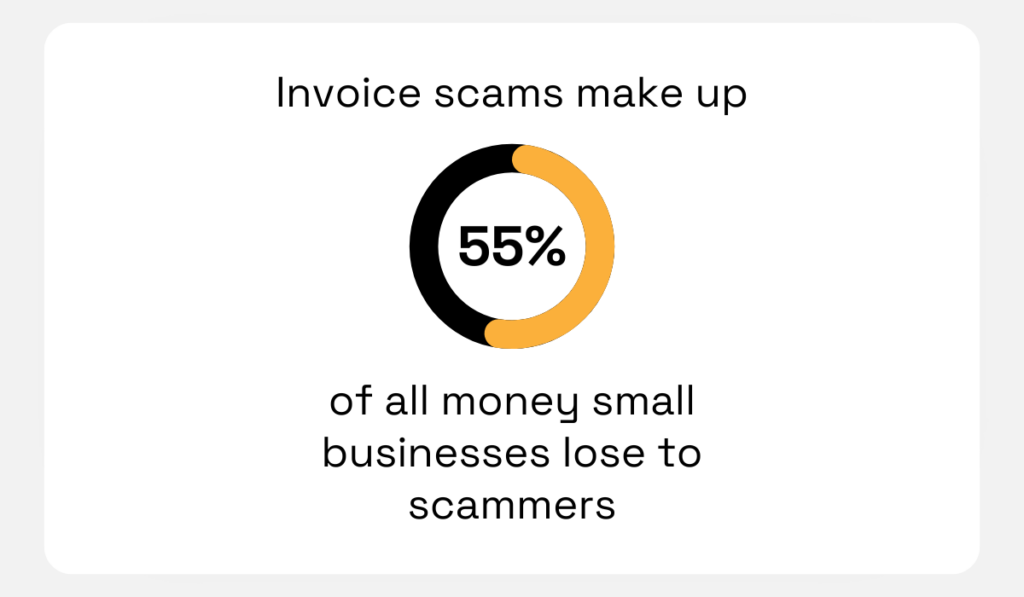
Illustration: Veridion / Data: Barclays
Sure, this may not be the most sophisticated way to scam organizations out of their money, but it doesn’t mean they can’t fall victim to it.
Even with the most careful procurement team out there, sometimes these types of fraud simply slip through the cracks.
Stephen Carter, Director of Product Marketing at Ivalua, explains why that is the case.
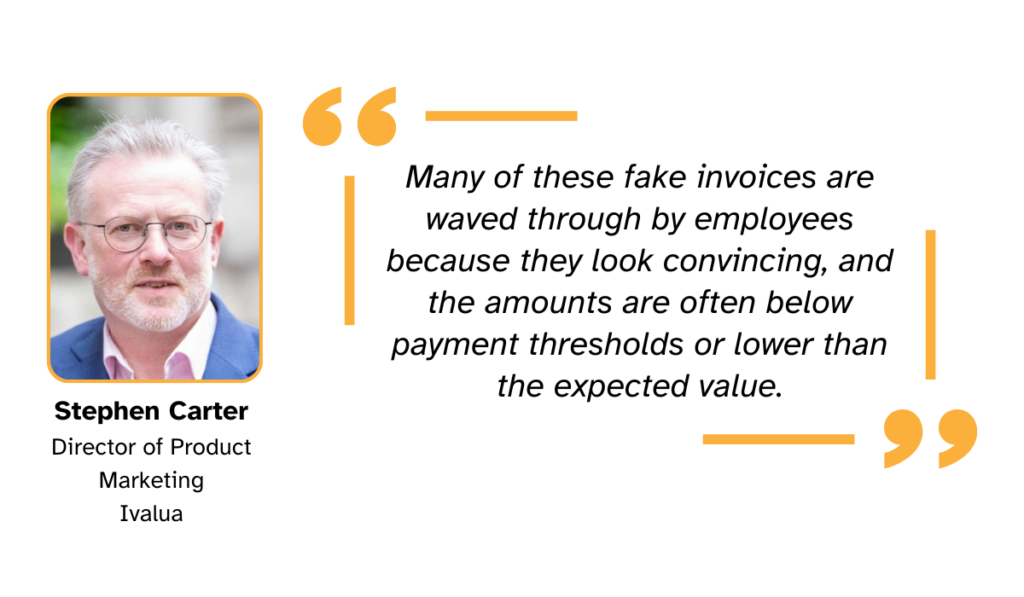
Illustration: Veridion / Quote: Procurement Magazine
But, how can blockchain-driven audits exactly help in these situations?
Well, for starters, the core feature of blockchain is immutability, which means it’s practically impossible for fraudsters to modify invoices once issued.
And even if they tried, blockchain records every change to your files and timestamps it, helping auditors trace any suspicious activity.
Plus, smart contracts—self-executing programs on the blockchain that enforce contract terms and conditions—can easily verify your invoices.
So, if a scammer tries to submit a fake payment request, the smart contract would automatically cross-reference it with the PO and delivery records on the blockchain.
Upon confirming that there’s no corresponding purchase order or delivery confirmation, it would reject the invoice.
Essentially, with blockchain, there’s no fear that the information across all your procurement records is incorrect, fake, or incomplete.
As a result, auditors can breathe a bit more easily, knowing they’re always working with reliable data they can trust.
Predictive analytics is a technology that uses statistical algorithms, data mining, and machine learning to analyze historical data, identify patterns, and make predictions about future events.
According to Frank Coker, CEO and Founder of Information Systems Management Inc., this is a real game-changer in procurement risk management.
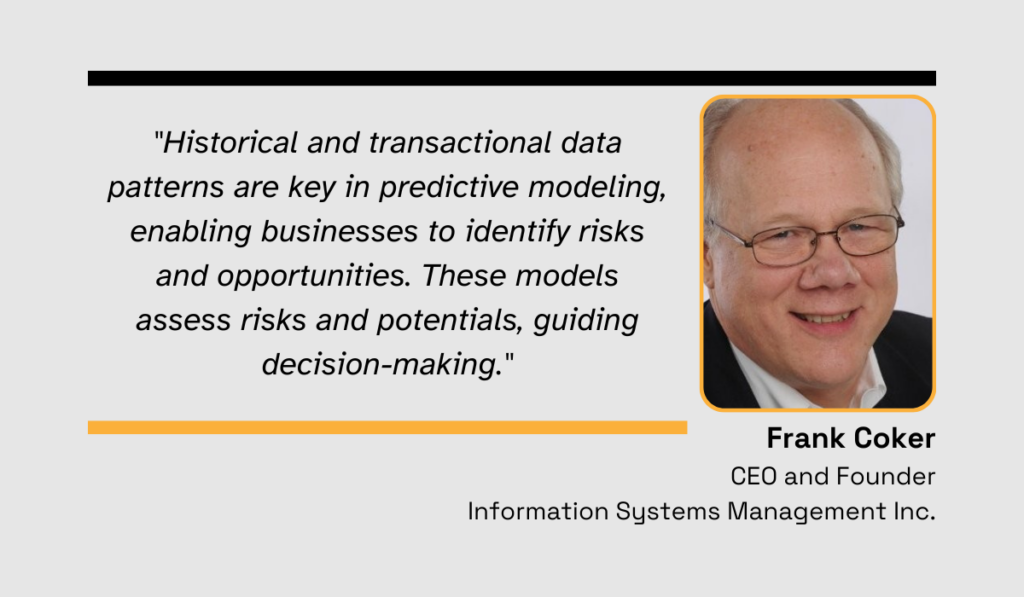
Illustration: Veridion / Quote: Inc.
And it’s a game-changer for procurement auditors, too.
Instead of just checking boxes and verifying compliance with rules and guidelines, they can now adopt a more strategic role by proactively identifying risks before they impact the company.
For example, in a large manufacturing company relying on many suppliers, predictive analytics could help auditors diagnose supplier risks such as bankruptcy before it becomes a serious problem.
It would study transaction histories, market data, and even news articles, and then, using machine learning algorithms, build predictive models and train them to classify suppliers into risk categories.
This would allow auditors to spot suppliers with declining financial health, and investigate further to understand and verify the prediction.
As Walter Sun, SVP and Global Head of AI at SAP points out, this technology is simply on another level.
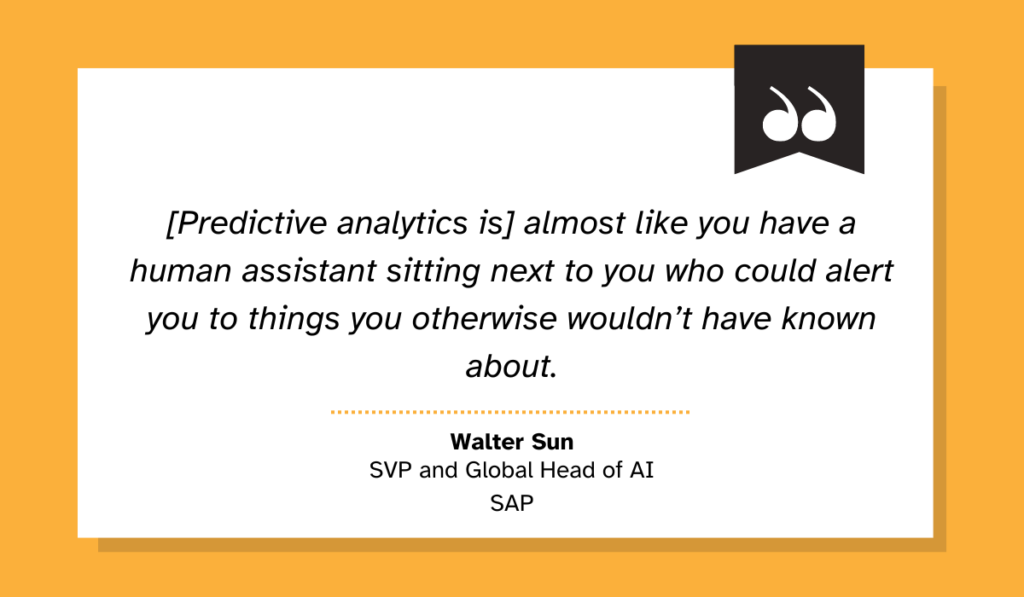
Illustration: Veridion / Quote: Fast Company
It can process vast amounts of information, recognize patterns, and apply the findings to make predictions about future outcomes—no auditor could ever do that all on their own.
Is it, then, a surprise that this technology is being adopted by CPOs?
According to a 2021 Deloitte survey, 12.82% of purchasing professionals prioritizing agile procurement report having already implemented this technology in their operations.
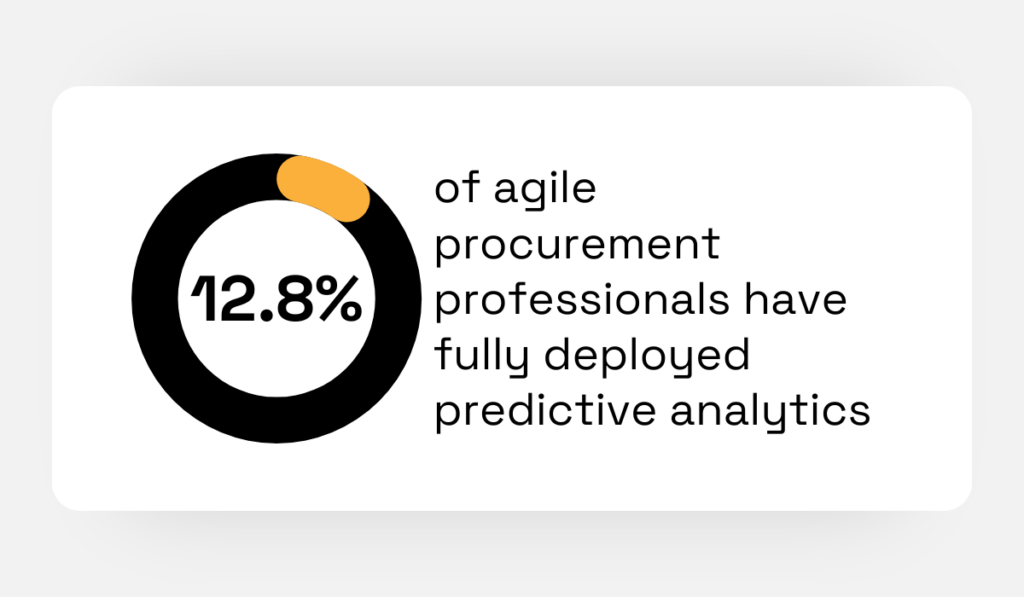
Illustration: Veridion / Data: Deloitte
And why wouldn’t they?
Being able to predict disruption is the key to effective risk management and, consequently, business success.
That’s precisely why we put predictive analytics on this list.
It enables the auditing team to go beyond their usual duties and mitigate risks across many aspects of the supply chain, ensuring businesses are prepared for whatever comes their way.
Thanks to the rise of all sorts of procurement software solutions, but also due to COVID-19 forcing us into isolation, remote audits have become increasingly common over the past few years.
Just like the name implies, remote audits analyze procurement activities without relying on visits to the site.
Instead, auditors use email, phone calls, video conferencing, and various digital tools to inspect procurement documents.
Now, this certainly made sense during the pandemic, but does it really have a future in procurement?
Seth Goldenberg, Vice President of Vault MedTech at Veeva Systems, a cloud-computing company focused on pharmaceutical and life sciences industry applications, thinks yes.
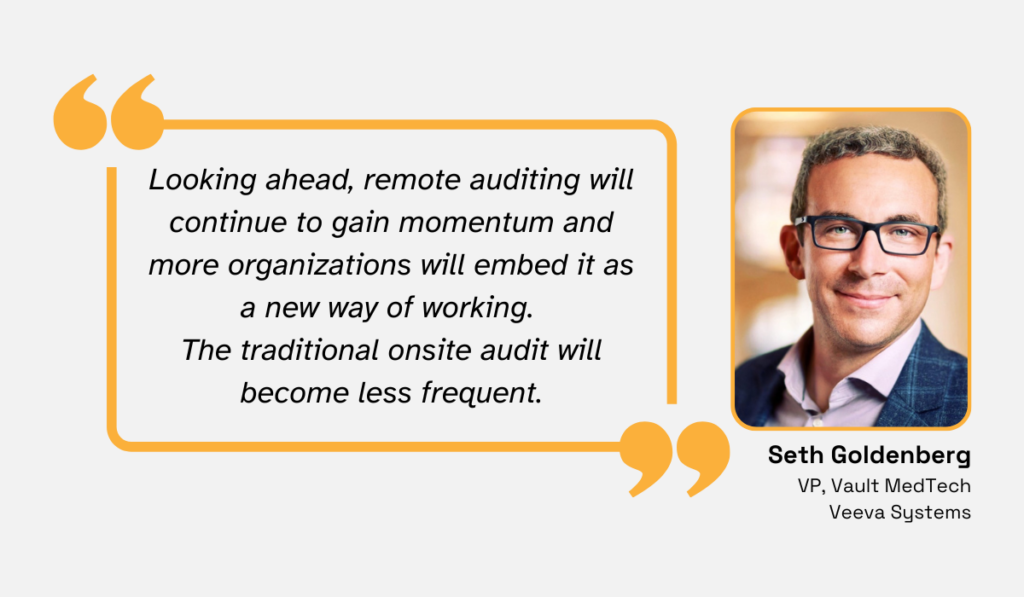
Illustration: Veridion / Quote: All Business
After all, this approach to auditing isn’t without its benefits.
For starters, it’s very flexible.
Auditors working remotely can reach almost anyone, anywhere, and conduct their jobs without geographical limits getting in the way.
As a result, audits can be scheduled more easily, reducing turnaround time.
Not to mention that remote audits save both time and money as well.
No need for physical travel means not having to organize and pay for transportation, lodging, meals, etc.
But now you must be wondering: exactly how effective is it?
According to research, it seems like remote audits are just as effective, if not more so, than in-person audits.
As it turns out, almost 40% of auditors agree that switching to remote audits had no impact on their efficiency, with an additional 46.7% saying it actually improved their auditing process.
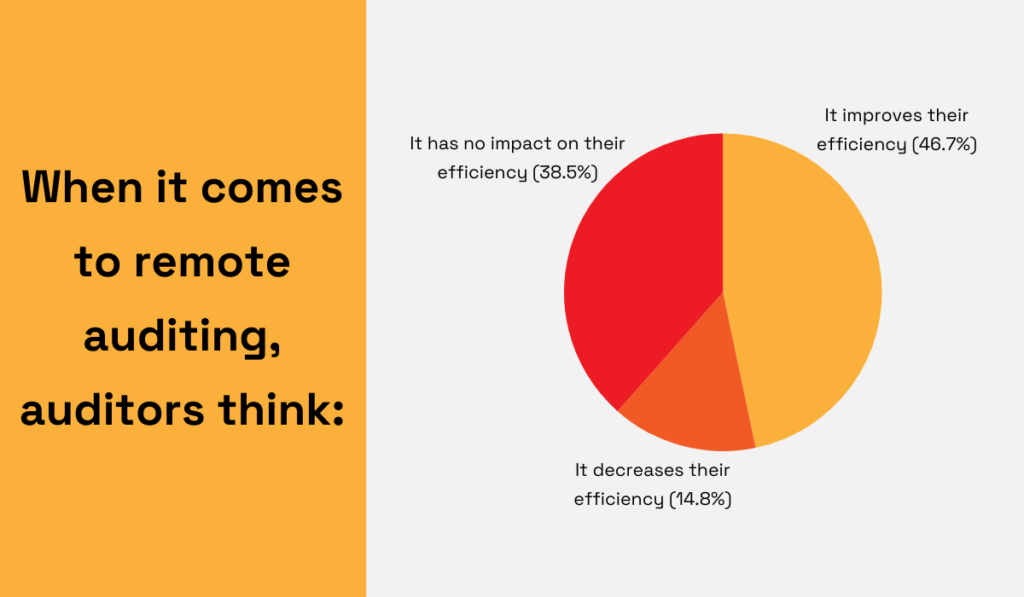
Illustration: Veridion / Data: Taylor and Francis Online
Only 14.8% reported that their efficiency decreased.
However, not everyone is convinced.
For example, Timothy Cruickshank, Lead Auditor and Consultant at a management consulting group Quality Audit Solutions, prefers on-site audits.
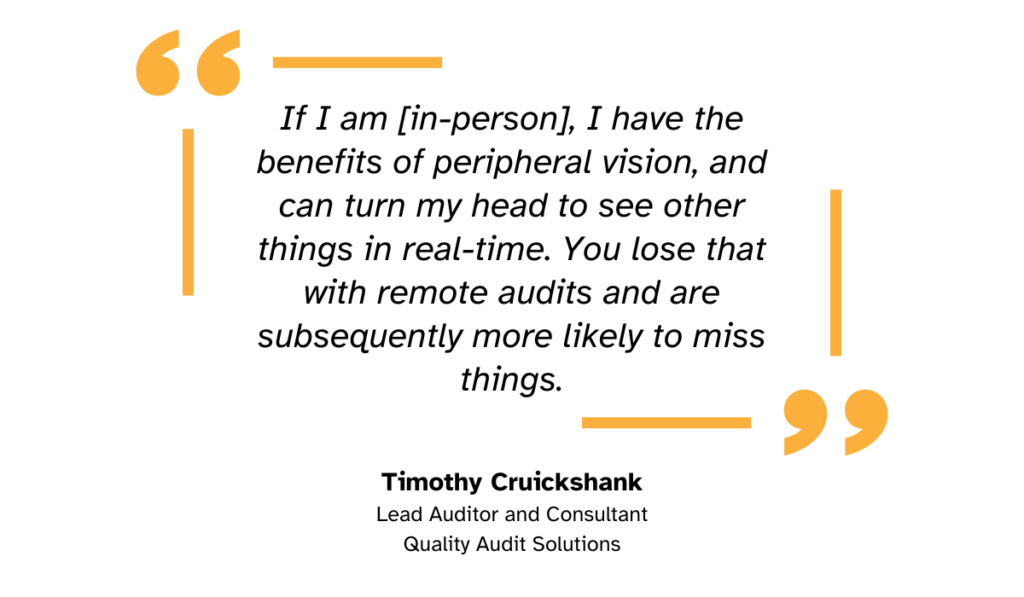
Illustration: Veridion / Quote: Quality Magazine
He explains that they allow for more nuanced analysis and help uncover details you’d probably miss otherwise.
Overall, despite these differing opinions, one thing is clear: remote audits have revolutionized the way auditing is conducted.
They have shown that there is a way to perform audits more efficiently and cost-effectively, without having to compromise on the quality of the work itself.
It’ll definitely be interesting to see how things develop in the future.
Procurement audits aren’t just about process improvement and cost savings anymore.
Today, there’s significant pressure on procurement departments to comply with Environmental, Social, and Governance (ESG) criteria, driven largely by growing expectations from customers and shareholders for businesses to operate more responsibly.
Don’t believe us?
Just take a look at a 2022 EY survey, in which 80% of senior supply chain executives reported increasing their emphasis on ESG initiatives.
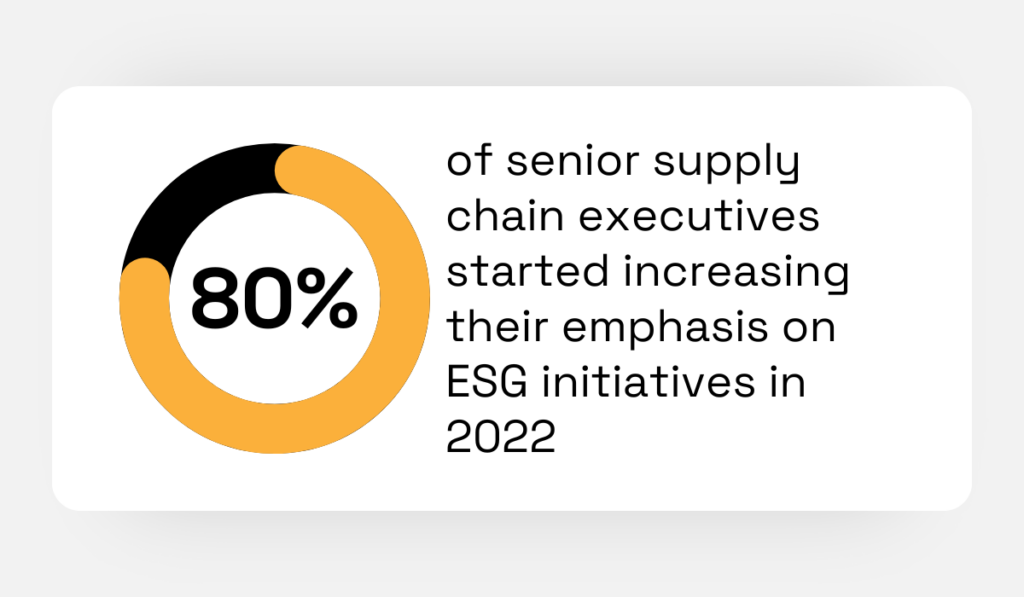
Illustration: Veridion / Data: EY
Obviously, the demand for sustainability is real, and ESG audits are key players here, making sure purchasing activities and procedures align with ethical and sustainable procurement practices.
But what exactly do these audits monitor?
Let’s break it down:
| Environmental criteria | Assessing whether supplies use eco-friendly materials and processes, evaluating the company’s carbon footprint, and monitoring resource efficiency. |
| Social criteria | Ensuring suppliers follow fair labor practices, assessing health and safety standards, and evaluating how procurement practices affect local communities. |
| Governance criteria | Checking anti-corruption measures, business transparency, compliance with laws and regulations, and the traceability of the supply chain. |
It’s safe to say that, with the increased importance of ESG compliance, the scope of procurement audits has changed forever.
Gone are the days when auditors focused only on operational or financial metrics.
These days, it’s all about thinking long-term and considering the broader impact procurement can have on the environment.
Many companies’ procurement practices have already been transformed by this.
For example, the sportswear brand New Balance has introduced its “Green Leaf Strategy” to improve the sustainability performance of its sourcing:
Part of that strategy involves rigorous audits of their suppliers to ensure they adhere to New Balance’s environmental impact criteria:
“Before placing production orders, we require new suppliers to pass a social and environmental compliance audit. We aim for approved or existing Tier 1 (finished product) suppliers to undergo a compliance audit at least once per year.”
As you can see, they are very serious about it, dedicating considerable time and effort to the process.
Unilever is no different.
Their “Responsible Sourcing Programme” prioritizes strict supplier audits as well, relying on frequent on-site and remote inspections to keep everything up to standard.
Here’s just a small excerpt from the program:

Source: Unilever
Those who aren’t able to pass the audit lose their ability to do business with Unilever.
All of this tells us that ESG audits are definitely not just a passing trend.
Companies are taking them seriously and investing their valuable resources into them.
In other words, ESG audits are here to stay and will undoubtedly continue to shape broader procurement—and business—strategies in the future.
Who would’ve thought that this one part of procurement could be so dramatically impacted by all these technological and regulatory changes?
But here’s the good news: you don’t have to follow every single trend that comes along.
Instead, focus on what matters most to your organization.
If you’re looking to increase efficiency and reduce manual errors, try AI.
If you have access to large amounts of procurement data and want to improve risk management, consider implementing predictive analytics.
The whole point of this article was to show you ways in which you can improve your audits, not to burden you with a to-do list.
So, focus on finding your path, and watch your audits get completely transformed, ensuring your operations stay efficient, agile, and compliant.